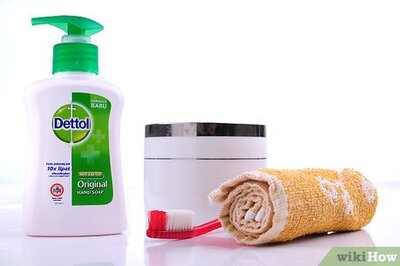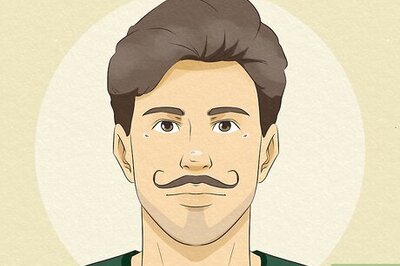
views
X
Research source
The vet may also suggest professional cleaning if your cat has the signs of oral diseases.[2]
X
Research source
Professional veterinary cleaning requires general anesthesia to thoroughly examine and scale teeth.[3]
X
Research source
This is generally a safe procedure and can prevent or treat problems with your cat’s oral health and general wellbeing. Between professional cleanings maintain your cat's dental health by cleaning your cat's teeth at home as well.
Meeting with the Vet

Take your cat for regular exams. Every cat should visit its vet at least once per year for a general and oral exam. This can indicate potential problems and whether your cat needs professional cleaning. Schedule an appointment with the vet annually or if your cat shows signs of oral diseases. These may include: Red or swollen gums Bad breath Heavy tartar accumulation Dropping food Not wanting to eat Favoring one side of their mouth when eating Drooling Vomiting Diarrhea Pawing at the face

Discuss your cat’s options. If your cat needs professional teeth cleaning, talk to your vet about this and other treatment options that may be less invasive. Ask questions about surgery details including anesthesia and overall cost, which can be $300-1,400. Some questions to ask include: Is home care and cleaning an option? How much experience do you have with cleanings? What are your anesthetic protocols? Does the procedure require blood work beforehand? Will my pet have an IV and fluids during the procedure? What type of monitoring is there for my cat during the procedure? Does this person have credentials? Can I observe and monitor my cat while it recovers? What should I do for my cat before the cleaning and afterwards?

Talk about concerns or potential risks. The safest and most comfortable way to clean your cat’s teeth professionally is under anesthesia. You may worry about the risks the procedure may present for your cat. Discuss your fears, what the procedure entails, its risks for your cat, and other concerns with the vet. Some concerns you may want to address include: Anesthetic risk, including fatalities Pre-existing conditions Your cat’s age and tolerability for the procedure Recovery Cost Additional procedures such as tooth extraction or X-rays

Consider a second opinion. In some cases, a second veterinary opinion can further inform you on getting your cat’s teeth professionally cleaned. They can assess the initial vet’s diagnosis and may confirm the diagnosis or suggest a different oral treatment. Getting a second opinion can further put your mind at ease about having your cat undergo a cleaning procedure. Recognize that doctors often value a second opinion. You should never feel pressure from any party to commit to a decision for care only with them.
Having the Procedure under Veterinary Care

Get pre-cleaning diagnostics. Approve of blood work, X-rays, and other diagnostic tests before your cat’s procedure. These common tests can tell your vet if your cat is healthy enough for anesthesia and the procedure. X-rays help the doctor better evaluate the teeth and jawbone, which may make cleaning or possible extractions easier. Be aware that diagnostic tests can add extra cost to procedure totals.

Stick to pre-procedure instructions. Ask your vet for directions about preparing your cat for the professional cleaning. Most cats have to fast from 8pm the evening before to reduce the risk of vomiting under anesthesia. They may also require vaccination boosters to increase immunity to infectious diseases after the procedure. Ensure your cat’s stomach is empty by securing food and water. In addition, keep it in overnight so that it doesn’t get any food from hunting or your neighbors.

Arrive early at the appointment. Give yourself and your cat extra time in the morning to get ready. Put your cat in its carrier for transport to the vet’s office. Aim to arrive at least 15 minutes early. This can ensure neither you nor your cat is unduly stressed. It also allows time to fill out forms, talk with the vet, and comfort your cat before the teeth cleaning starts. Ask your vet any questions you may have about the procedure and if they will contact you before performing additional procedures. You may also want to know when you can see your cat.

Wait to contact the vet. After the teeth cleaning, your pet will recover in a warm kennel under veterinary observation. Although you may be nervous and want to call, allow the vet to contact you first. This will give them time to review your cat’s health and develop after-care instructions. In some cases, your vet may give you a specific time to call or pick up your cat. Recognize that the vet may call you during the cleaning if there are any abnormalities or additional procedures are necessary.

Follow after-care instructions. Most cats can go home after they’ve recovered properly from the anesthesia and procedure. At this time, the vet will discuss after-care with you. Ask for a copy of the instructions and any other questions you have about how to care for your cat following its teeth cleaning. Give your cat any antibiotics or pain medications as instructed by the vet. Keep your cat in a warm and quiet environment inside your home for the first 24 hours. Offer them a light meal and plenty of fresh water.

















Comments
0 comment